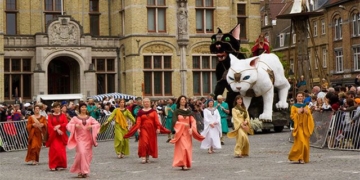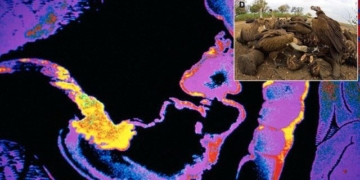Recently, certain mountainous regions in Northern Vietnam and Quang Nam Province have been found to have high levels of radiation, classified as “unsafe.” VNE reporters spoke with Mr. Tran Binh Trong, Deputy Head of the Technical Department of the Vietnam Rare Earth Geological Federation, about this issue.
– Which areas are currently inhabited by people living in high radiation zones, sir?
– The project “Radiation Environmental Assessment” that we conducted from 2000 to 2002 identified five residential areas with high radiation levels, such as Tien An and Tien Phuoc in Quang Nam (which are classified as naturally radioactive), as well as Nam Xe in Lai Chau and Binh Duong in Cao Bang (which are classified as rare earth regions)…
In the second project carried out immediately after (expected to be completed by the end of August 2006), we continued to assess radiation environments at seven locations: Dong Ba (Lai Chau), Then Sin, Muong Hum (Bat Sat, Lao Cai), Yen Phu (Yen Bai), Thanh Son (Phu Tho), An Diem, Ngoc Kinh (Quang Nam).
In general, the areas affected by high radiation levels are concentrated in the northern mountainous regions and Quang Nam Province.
– What kind of zones are classified as “unsafe” for residential areas?
– Currently, in our country, radioactive mines and deposits mainly contain Uranium and Thorium. These mines have low concentrations but high radiation intensity. The nearby areas have an annual radiation energy accumulation of typically 2-4 mSv, while the environmental standard allowed in Vietnam is only 1 mSv. In the central areas of radioactive mines, the radioactive ore bodies have an effective dose rate of 10 to 30 mSv/year, which have been classified as unsafe radiation areas for the local population, with recommendations for local authorities to implement protective measures.
For areas close to the safety threshold, where the radiation energy accumulation is between 0.75-1 mSv, we also mark these areas and establish them as controlled zones for annual monitoring.
– How does the current exposure level of residents in these areas affect their health and lives?
– In fact, our main task is to survey and delineate areas with high radiation levels, but we do not yet know the specific current impact. However, it is clear that in these regions, the incidence of respiratory and digestive diseases is higher than normal. For instance, in Tien An (Tien Phuoc, Quang Nam), residents use local water sources like wells that contain graphite mixed with uranium for drinking, leading to a higher prevalence of stomach and lung diseases.
In reality, areas within high radiation zones suffer significant harm. Radioactive substances often disperse in forms such as suspended dust, dissolve in water, persist in soil, and absorb into food crops, or emit natural radiation (gamma rays). These substances decay into atomic rays, entering the body through respiratory and digestive pathways, causing cellular tissue mutations, leading to cancer, gene mutations, birth defects, or deformities in the offspring of exposed individuals. External exposure (radiation from the environment hitting the body) can lead to leukemia.
What is concerning is that despite being aware of such significant harms, relocating and isolating residents from these areas is very challenging. The diseases caused by radioactive substances often have long-term effects, which are not immediately visible, and the local ethnic communities still believe they have lived without issues for so long, so there is no problem.
– What needs to be done to mitigate the negative effects of radiation on residents?
– In my opinion, the most important thing is to widely disseminate radiation safety information to people living near radioactive mineral deposits. They need to understand so they can voluntarily adopt safety measures.
We have also recommended that localities with residents in high radiation areas organize community health checks and provide medical treatment for the people. This will help to more specifically determine the extent of the impact of radioactive substances on the population, while also raising their awareness of self-protection.
Additionally, we advise residents against building houses and using water sources near radioactive mines; we also identify alternative water sources for them. In particular, it is prohibited for residents to grow crops or raise livestock in high radiation areas. Certain plants like taro, cassava, peanuts, and sweet potatoes absorb radioactive particles very well, which poses significant dangers if consumed by the population.
Minh Thuy


















































